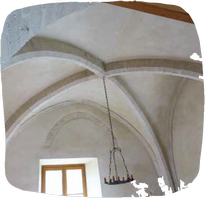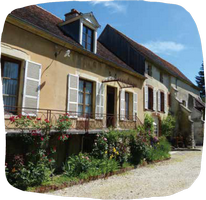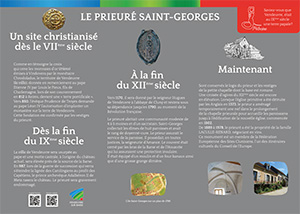Voici les différents panneaux du circuit patrimonial Mélusine :
Prieuré Saint-Georges
The Saint-Georges Priory
Did you know that Vendeuvre was a papal territory in the ninth century?
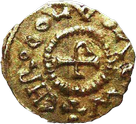
A Christianised site since the seventh century
The cross adorning the gold coins (triens) issued in Vindovera by Chrodoladus, a money maker, confirms that the territory of Vendeuvre (la villa), conferred to Pope Stephen IV by Louis the pious, son of Charlemagne, at his coronation in 812 in Rheims, became a ‘pontifical land’.
Around 850, Bishop Prudence of Troyes sought permission from Pope Leo IV to establish a monastery on the land of Vendeuvre. The remains of the priory corroborate the existence of this structure.
From the late ninth century
The villa de Vendeuvre was stolen from the pope and a castle mound, at the origin of the existing château, was built near the Barse source.
In 987, Prince-Archbishop Adalberon II of Metz destroyed the château during the succession war that saw the Carolingian lineage disappear in favour of the Capetians. The priory was considerably damaged.
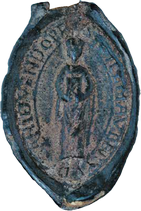
In the late 12th century
Circa 1170, Lord Hugues de Vendeuvre donated the priory to the Abbey of Cluny under the authority of which it remained until 1790, around the time of the French Revolution.
The priory housed a modest community of four to five monks and a sacristan. Saint-Georges collected the tithes of eight parishes and had the rank of a deanery cure. The Prior performed the service of the parish and owned the seigneury of Amance in all respects. The convent was surrounded by the streams of the Barse and the Houzotte, which provided insular protection.
It was also equipped with a mill and a communal oven as well as a large tithe barn.
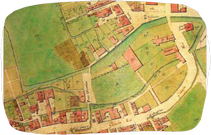
Saint-Georges Isle on a map dated 1785
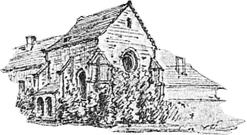
Present day
The Prior’s dwelling and the remains of the small chapel featuring a Romanesque base have been preserved and stunning 12th-century cross-arches are still standing. When the early church was destroyed by the British in 1373, the Prior installed a temporary nave in the extension of the priory chapel to accommodate parishioners until the completion of the new church started in 1502.
From 1889 to 1978, the priory was the property of a wine merchant family called LACULLE-RENARD.
This monument is part of the European Federation of Cluniac Sites, one of the Cultural Routes of the European Council.
